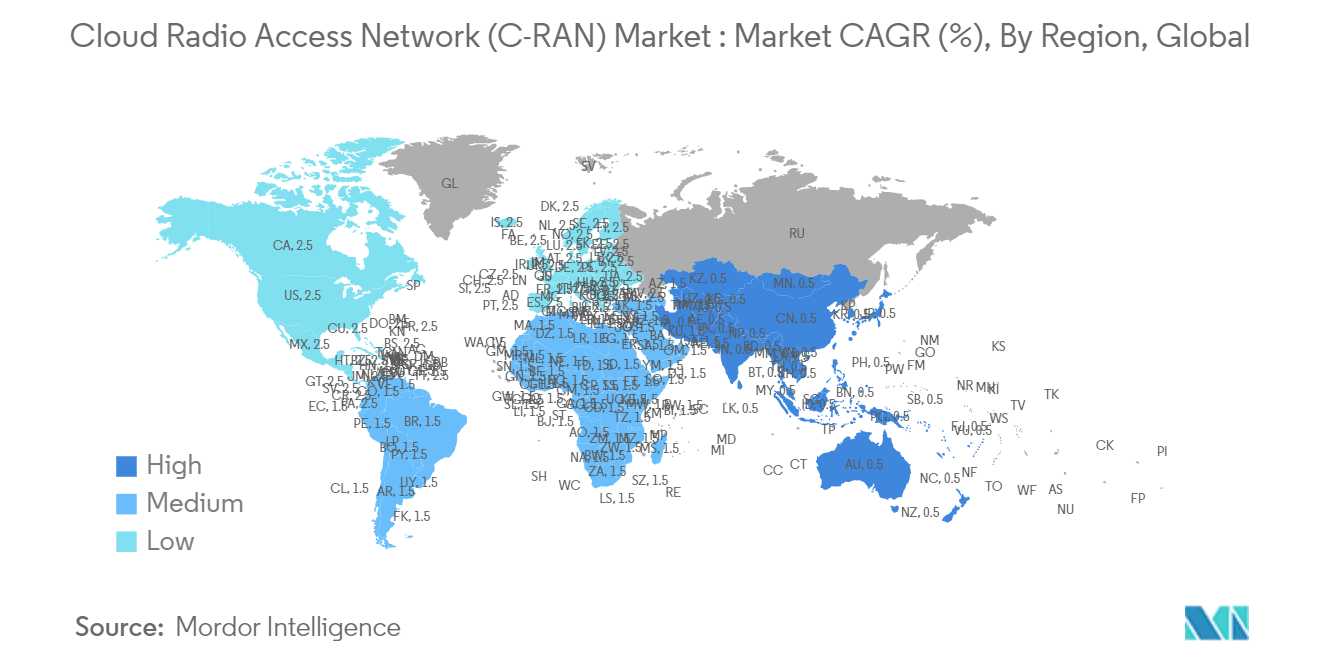Market Trends of C-RAN Industry
5G to be the Fastest Growing Network Type
- C-RAN enables operators to deploy 5G networks more cost-effectively by reducing hardware and operational costs, along with demand for high-speed mobile connectivity continues to rise, especially with the proliferation of IoT devices and emerging technologies like autonomous vehicles and augmented reality, the market for 5G C-RAN is expected to grow significantly in the coming years.
- The rise in adopting 5G fixed wireless access would drive the studied market over the forecasted period. The graph indicates that the 5G connections are analyzed to reach a notable 5.3 billion subscriptions, thereby contributing to the market growth rate.
- By geography, the North American region has a substantial share globally. 5G technology is widely adopted, particularly in the Cloud Radio Access Network (C-RAN) market. C-RAN leverages cloud computing to centralize and virtualize baseband processing functions, offering flexibility and scalability.
- With 5G’s high data rates, low latency, and massive connectivity capabilities, it is well-suited to C-RAN deployments, enhancing network performance and enabling advanced services like IoT and augmented reality. This combination of 5G and C-RAN drives innovation and efficiency in the telecommunications industry across North America.
- In December 2023, AT&T announced plans to be a key provider in the United States in commercial-scale open radio access network (Open RAN) deployment. In collaboration with Ericsson, this industry move will further the telecommunications industry efforts and help build a more robust ecosystem of network infrastructure providers and suppliers. AT&T’s and Ericsson’s multiyear joint commitment to Open RAN deployment comes at a pivotal moment in the 5G innovation cycle.

Asia-Pacific is Expected to Register the Fastest Growth
- Several factors drive the C-RAN market in China as the country has a thriving domestic C-RAN ecosystem with several significant players, such as Huawei and ZTE. China is aggressively deploying 5G networks, and C-RAN is considered a key technology to allow efficient network performance and support diverse 5G use cases.
- In China, the widespread adoption of 5G mobile networks is supporting various service types, such as healthcare, automotive, logistics, energy, and public safety. Network slicing enables programmable network instances that match the requirements of individual use cases, subscriber types, and applications.
- By network type, the 5G network is growing at a considerable rate. This growth is attributed to several factors, including increased demand for high-speed connectivity, software-defined networking, virtualization, technological advancements, and industry collaboration. The Japanese government has been trying significantly to promote the deployment of secure 5G telecommunications networks in recent years by supporting open radio access network (RAN) technology, which can further accommodate better vendor flexibility when building those networks.
- Operators in the Rest of Asia-Pacific region are actively embracing C-RAN structure and network virtualization to tackle increasing deployment costs. Centralized radio access networks have gained increased significance in recent years as regional operators seek sound business models and equipment vendors try to reshape the landscape to suit their businesses. Countries such as India, South Korea, and Malaysia are developing C-RAN architectures to cater to growing customer demands effectively.


